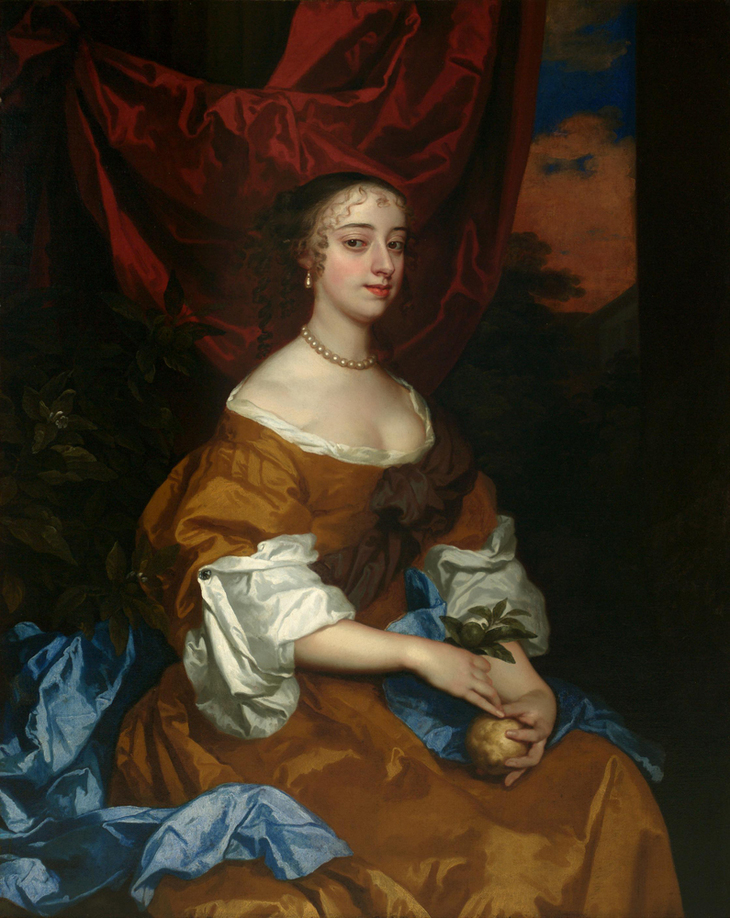Urban geographer and mapmaker Duncan A. Smith explores the birth of London's theatre scene — and the first public performance by a woman.

Like most big cities, London is comprised of many centres and districts, each with their own identities and functions.
From banking in the City, government in Whitehall, entertainment in the West End, to industry in Docklands, these famous districts make up the geography and character of the capital.
The origin of these places often goes far back in London's history, with seemingly small beginnings during the medieval and early modern periods providing the seeds that have grown over time into major centres.
Fleet Street is a famous example. German printer Wynkyn de Worde first set up his press by Fleet Street in the early 1500s, and it became the centre of book printing, and later the newspaper industry, for nearly 500 years.
The history of London's theatre cluster is also one of change, in response to government bans, and the evolving social geography of the capital.

Performances in pubs
Early public theatre in London began during the mid-1500s, with performances staged at inns, like the George in Southwark. At the time, roads into London were lined with coaching inns catering to travellers, and plays took place in the inn yards with punters watching from the surrounding galleries.
Performances at the inns could be rowdy, and the City of London went so far as to ban public theatre for its perceived drunkenness and immorality in 1574. This left the theatre companies with the dilemma of how to tap London's growing market for entertainment without falling foul of the City authorities. The actors' shrewd response was to set up just outside the City in the 'liberties' (ex-monastic lands beyond the City’s jurisdiction).
London’s first permanent theatre, called simply The Theatre, was in Shoreditch created in 1576 by James Burbage. Shakespeare is thought to have first trained as an actor here.

A move across the Thames
London's theatres then made the move across the river to Bankside, with the Rose created in 1587, the Swan in 1596 and the Globe in 1598, setting the stage for London's golden age of Elizabethan theatre.
Bankside was an ideal location for an entertainment district: it was a liberty beyond the control of the City authorities; the Thames allowed easy access by boat for wealthier punters; and the area already had audiences who came to watch its Tudor blood sports of bull and bear-baiting.
At its peak, 10,000 London theatre goers could attend performances daily, enjoying the great works of Shakespeare, Marlowe and Jonson.
The success of the Bankside theatres became more uncertain in the 1600s. The Puritans grew in influence, and they shared the City's moral objections to the theatre and its system of noble patronage. Theatre was banned during the Long Parliament of 1642, and the Bankside theatres were shut down and demolished, ending the site of London's original golden age of theatre.
This didn't mean that the demand for theatre had died out of course, rather it had to wait for the times to change and a new theatrical age to emerge.

England's first female actor
The theatre returned with a bang during the Restoration in 1660, moving to the growing wealthy suburbs around the Strand and Covent Garden.
An important change at this time was that women were finally accepted as actors in public theatre, as was already the case on the continent. England's first professional female actor was Margaret Hughes who played the tragic role of Desdemona in a performance of Othello in 1660. All female roles had been played by men and boys during the earlier Elizabethan period, so this represented a huge social change.
King Charles went so far as to issue a royal warrant in 1662 that female roles were to be played exclusively by women. Female actors later became celebrities of the London stage, such as Nell Gwyn and Elizabeth Barry.
This was also the period when the West End became London's premier theatre location. The production of Othello featuring Margaret Hughes had been staged in the fashionable suburb of Lincoln’s Inn Fields in the Vere Street Theatre, a modified tennis court.
The move 'out west' became permanent with the nearby opening of Theatre Royal Drury Lane in 1663 and the start of West End theatre as we know it today.

Gilded City: Tour Medieval and Renaissance London by Duncan A. Smith is available to buy in hardback, RRP £25



